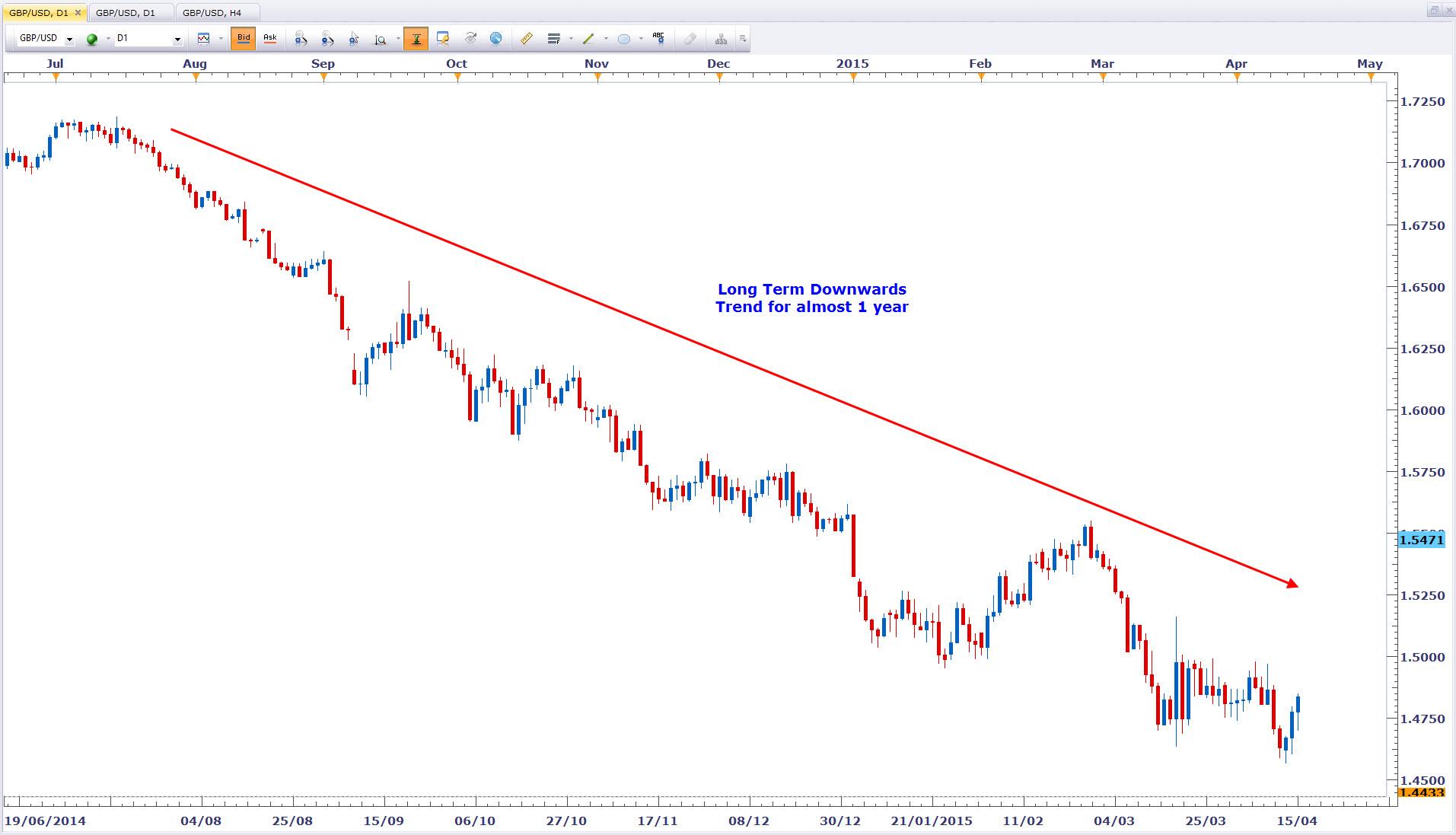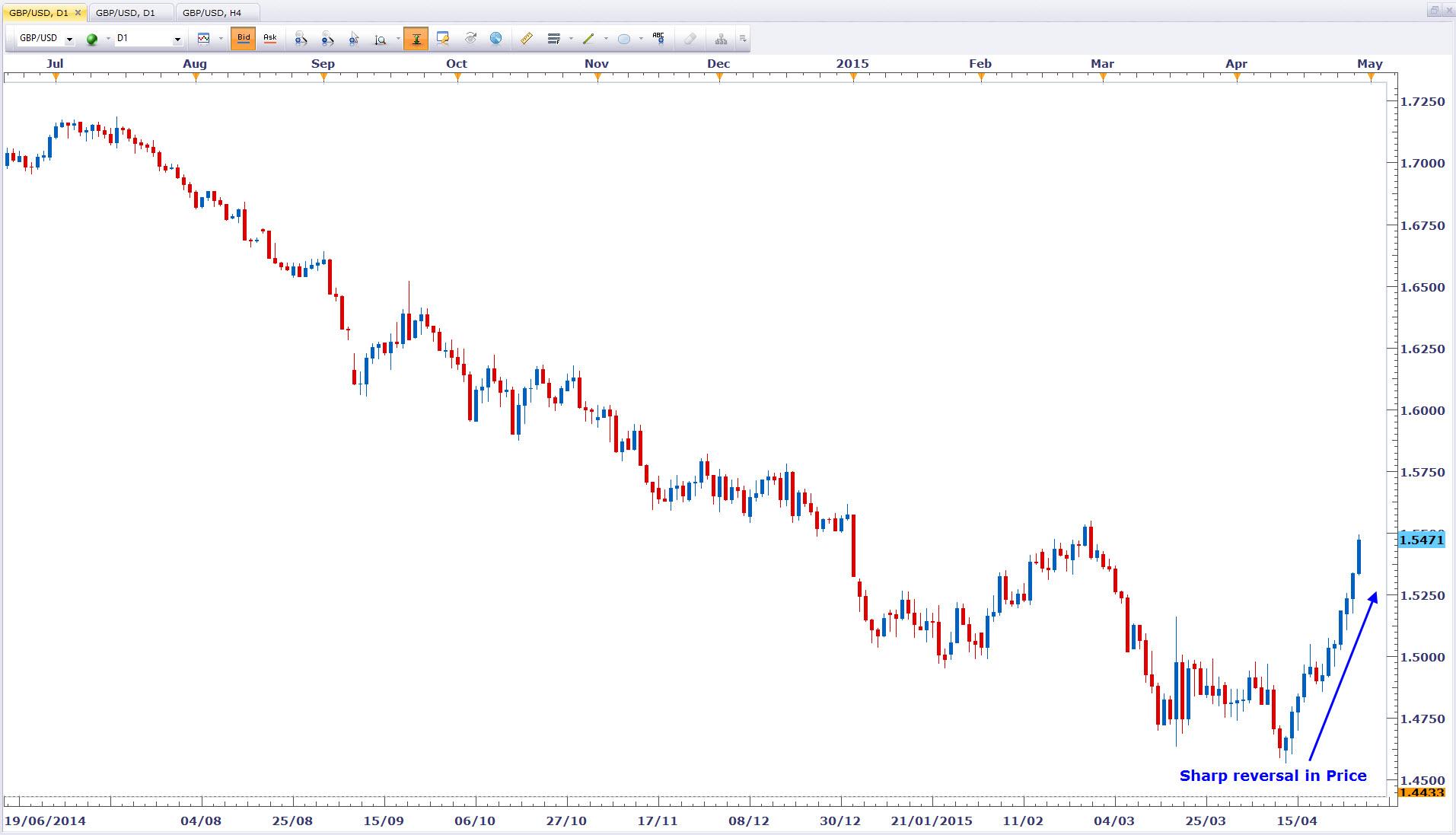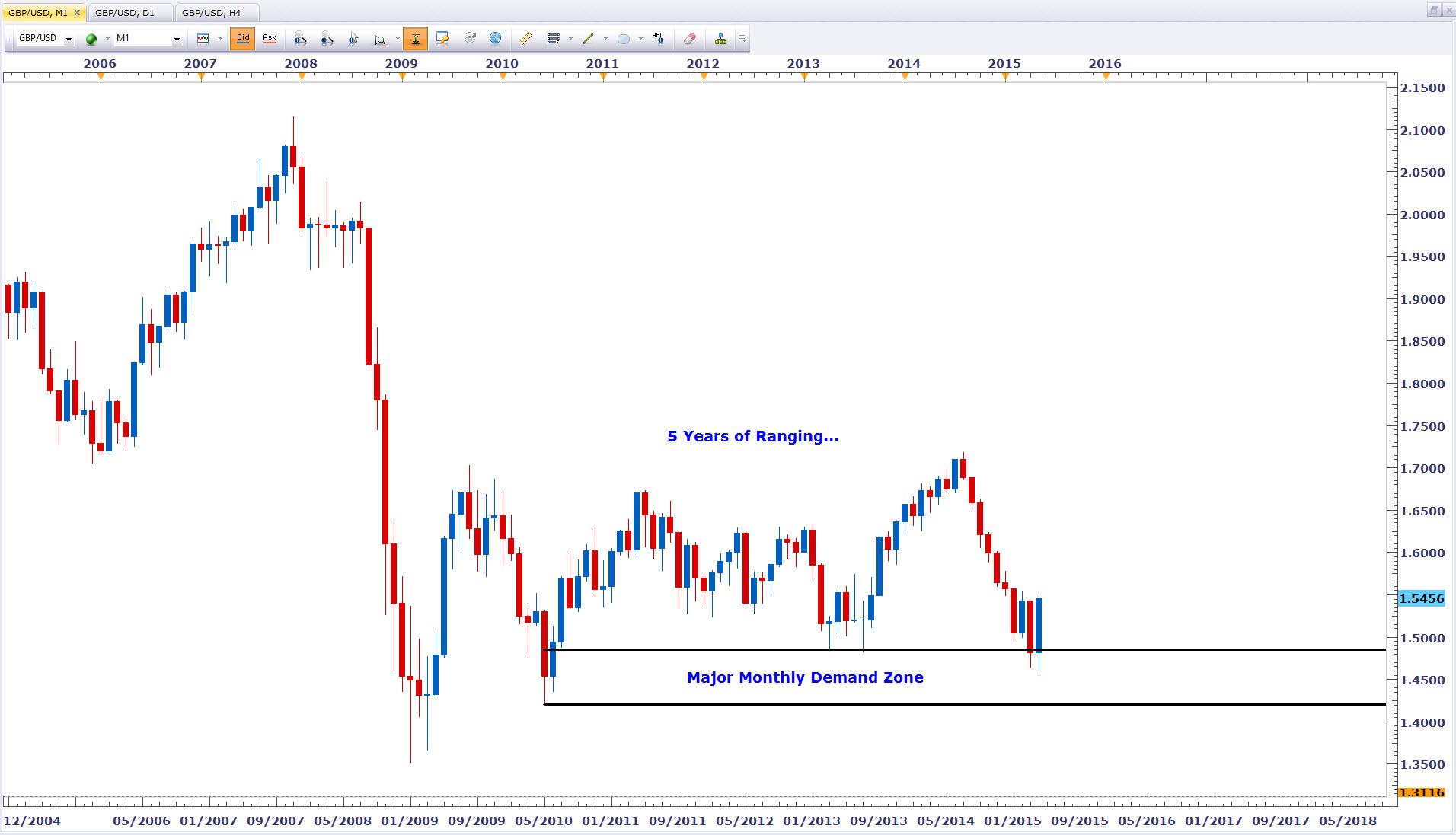![]()
Earlier this week I was teaching a lesson in the ongoing Extended Learning Track program for Online Trading Academy, which is a session that revises content learned in the classroom-based environment and then applies it to live markets. As it stands, the session I taught was one of my favorite topics to talk about, namely, multiple time frame analysis. As we all know, consistent trading in the worldwide currency markets has its challenges and we can choose to keep our analysis as simple or complex as we choose. However, my colleagues and I would always say that a trading strategy needs to be simple and rules based to make it truly worthwhile and obviously easy to execute in a regular fashion. With this in mind though, it is vital to remember that avoiding or ignoring the power of multiple timeframe analysis in trading can be a costly endeavor.
So, if we understand that using a number of different charts to get a clearer picture of a market is a necessary practice, then why don’t people do it more often? It is amazing how many people I meet that day-trade on a regular basis, yet only look at small timeframes and wonder why their results are inconsistent. They haven’t been taught to follow the trend and use small charts for precise entries so they often complain about direction and are left scratching their heads wondering why they have been following the trend, and then as soon as they enter a trade they find the trend reverses on them. If you have ever heard of the common trading phrase, “the trend is your friend,” you too may have suffered from the same frustration from time to time. I know I did! One way to avoid this pitfall is to simply avoid using small timeframe charts alone, just because you are an intraday trader. Following the trend is a key lesson in any new trader’s educational journey and a lesson which I do agree with to a certain extent. However, we must remember that any trend is something that has already happened and when we trade we are trying to determine what is actually going to happen next. Obviously, trends do have the tendency to continue to a degree but, as we know, changing trends also occur and being aware of this and learning how to interpret it becomes a powerful skill in any trader’s arsenal. Big changes in trend direction tend to occur quite regularly in the FX markets as well, which means there are plenty of fantastic opportunities to jump on board new movements early in their development if we know what we’re looking for. This is where the power of multiple timeframe analysis comes into its own.
We also need to remember that the dynamics of the currency markets openly allows big trend changes to occur on a regular basis because, unlike stocks, there are always two instruments in every currency pair. Because one currency is constantly being valued against another, this means technically that the price is highly unlikely to ever go to zero and, due to the nature of the theory of reversion to mean, we are more likely to see swings up and swings down on a regular basis. In the stock market on the other hand, the long term trends can last much longer with less exaggerated swings up and down.
Let us take a look at some recent price action of one of the more popular major currency pairs, the GBPUSD:
Obviously, we can see that for almost a year now the cable currency pair has been in a long-term downward trend, consistently making a series of lower highs and lower lows. If one was to follow the methodology of traditional technical analysis, they would be looking for trading opportunities which would involve short selling the GBPUSD in an effort to reengage and follow the existing trend. However, the objective and astute trader must also be aware of where a trend reversal is likely to happen as they don’t want to be the last person jumping on board the move. This can actually increase risk and decrease reward. When a trend change does occur it can often be very quick and rather unforgiving as we can see in the below example:
At the time of taking the above screenshot, the GBPUSD had reversed in price by almost 1000 pips in around just two weeks. If you had been following the trend you probably wouldn’t be feeling too confident in that strategy right now. In my XLT session we learned in detail how to anticipate these shifts in price action ahead of time to secure ourselves an edge in the marketplace. Obviously, there is a lot more to identifying these changes in price that can be explained in the context of a short article like this, but to give you an idea of what is involved take a look at the chart below:
Does this make things a little clearer for you? By stepping out and looking at a chart on a bigger timeframe, we shouldn’t really be too surprised right now that a sharp correctional rally in the currency pair occurred. If we remain completely objective, we can see that the GBP USD actually trended down to the bottom portion of a five year range. Until this range is broken we must assume that it will hold, which would suggest more upside potential for the Pound against the US Dollar from where it stands currently. If had only analysed the small time frames we would have completely ignored this possibility.
One of the biggest lessons I learned during my trading education was to never make assumptions. Everything that we see on the news or even on a price chart is the result of something that has already happened. Our job as traders and investors is to analyse what has happened so as to give us an idea of what may happen next. The key is to open our eyes and look at the big picture as well as the small one.
The information provided is for informational purposes only. It does not constitute any form of advice or recommendation to buy or sell any securities or adopt any investment strategy mentioned. It is intended only to provide observations and views of the author(s) or hosts at the time of writing or presenting, both of which are subject to change at any time without prior notice. The information provided does not have regard to specific investment objectives, financial situation, or specific needs of any specific person who may read it. Investors should determine for themselves whether a particular service or product is suitable for their investment needs or should seek such professional advice for their particular situation. Please see our website for more information: https://bustamanteco.com/privacy-policy/
Editors’ Picks

EUR/USD climbs toward 1.1800 on broad USD weakness
EUR/USD gathers bullish momentum and advances toward 1.1800 in the second half of the day on Tuesday. The US Dollar weakens and helps the pair stretch higher after the employment report showed that Nonfarm Payrolls declined by 105,000 in October before rising by 64,000 in November.

GBP/USD climbs to fresh two-month high above 1.3400
GBP/USD gains traction in the American session and trades at its highest level since mid-October above 1.3430. The British Pound benefits from upbeat PMI data, while the US Dollar struggles to find demand following the mixed employment figures and weaker-than-forecast PMI prints, allowing the pair to march north.

Gold extends its consolidative phase around $4,300
Gold trades in positive above $4,300 after spending the first half of the day under bearish pressure. XAU/USD capitalizes on renewed USD weakness after the jobs report showed that the Unemployment Rate climbed to 4.6% in November and the PMI data revealed a loss of growth momentum in the private sector in December.

US Retail Sales virtually unchanged at $732.6 billion in October
Retail Sales in the United States were virtually unchanged at $732.6 billion in October, the US Census Bureau reported on Tuesday. This print followed the 0.1% increase (revised from 0.3%) recorded in September and came in below the market expectation of +0.1%.

Ukraine-Russia in the spotlight once again
Since the start of the week, gold’s price has moved lower, but has yet to erase the gains made last week. In today’s report we intend to focus on the newest round of peace talks between Russia and Ukraine, whilst noting the release of the US Employment data later on day and end our report with an update in regards to the tensions brewing in Venezuela.
RECOMMENDED LESSONS
Making money in forex is easy if you know how the bankers trade!
I’m often mystified in my educational forex articles why so many traders struggle to make consistent money out of forex trading. The answer has more to do with what they don’t know than what they do know. After working in investment banks for 20 years many of which were as a Chief trader its second knowledge how to extract cash out of the market.
5 Forex News Events You Need To Know
In the fast moving world of currency markets where huge moves can seemingly come from nowhere, it is extremely important for new traders to learn about the various economic indicators and forex news events and releases that shape the markets. Indeed, quickly getting a handle on which data to look out for, what it means, and how to trade it can see new traders quickly become far more profitable and sets up the road to long term success.
Top 10 Chart Patterns Every Trader Should Know
Chart patterns are one of the most effective trading tools for a trader. They are pure price-action, and form on the basis of underlying buying and selling pressure. Chart patterns have a proven track-record, and traders use them to identify continuation or reversal signals, to open positions and identify price targets.
7 Ways to Avoid Forex Scams
The forex industry is recently seeing more and more scams. Here are 7 ways to avoid losing your money in such scams: Forex scams are becoming frequent. Michael Greenberg reports on luxurious expenses, including a submarine bought from the money taken from forex traders. Here’s another report of a forex fraud. So, how can we avoid falling in such forex scams?
What Are the 10 Fatal Mistakes Traders Make
Trading is exciting. Trading is hard. Trading is extremely hard. Some say that it takes more than 10,000 hours to master. Others believe that trading is the way to quick riches. They might be both wrong. What is important to know that no matter how experienced you are, mistakes will be part of the trading process.
The challenge: Timing the market and trader psychology
Successful trading often comes down to timing – entering and exiting trades at the right moments. Yet timing the market is notoriously difficult, largely because human psychology can derail even the best plans. Two powerful emotions in particular – fear and greed – tend to drive trading decisions off course.



